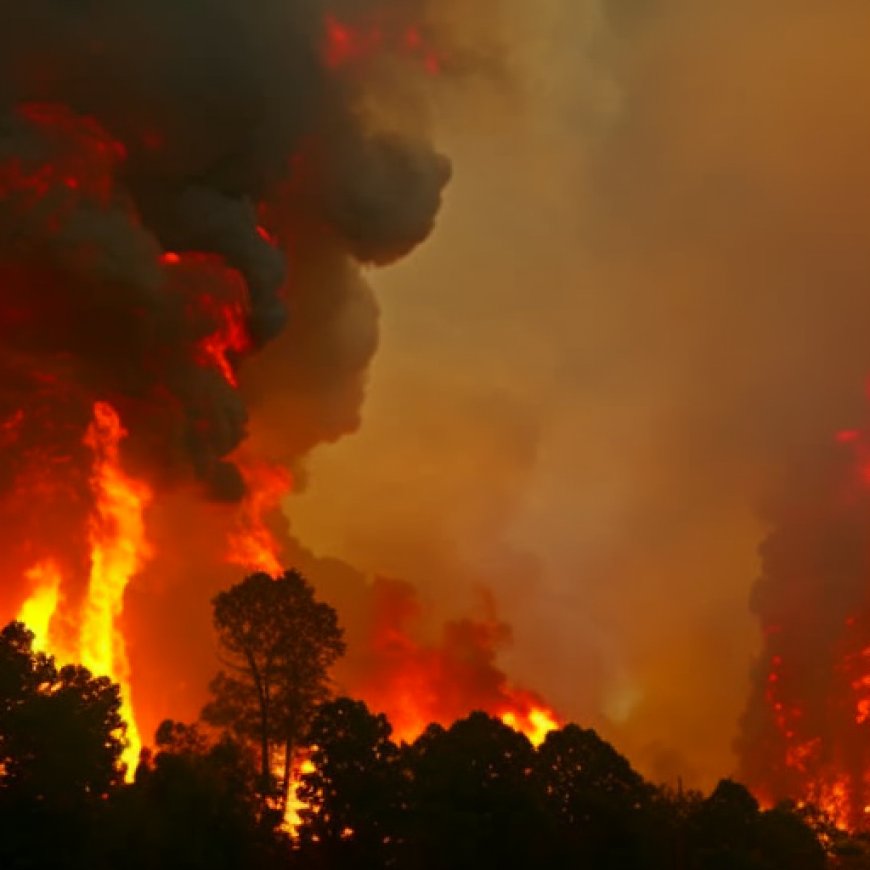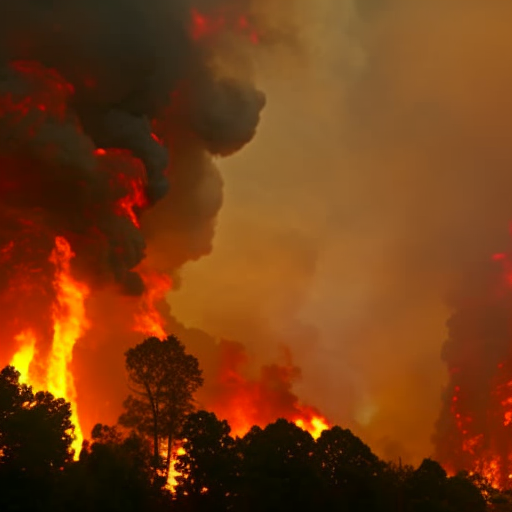Forest fires to rise significantly in Odisha by 2030 due to climate change: Report
Forest fires to rise significantly in Odisha by 2030 due to climate change: Report The New Indian Express


Forest Fires in Odisha Expected to Increase Significantly by 2030

A new study predicts that with climate change triggering longer and more intense heatwaves, forest fire incidents in Odisha are expected to rise significantly by 2030. This will have a severe impact on districts like Kandhamal, Koraput, Kalahandi, and Rayagada, which have a sizeable tribal population.
Factors Contributing to Forest Fires
The study, conducted by a group of geographers and environmental scientists, reveals that the increase in temperature in districts with high susceptibility to forest fires, compounded by local practices and over-exploitation of natural resources, including water, and clearing of forests for mining, industrial, and agricultural purposes, may lead to increased temperatures and reduced relative humidity conditions conducive to forest fires.
High Forest Fire Susceptibility Zones
Central, southern, northwestern, northern, and some northeastern parts of Odisha, including Angul, Kandhamal, Rayagada, Kalahandi, Koraput, Sundargarh, and Mayurbhanj, have been identified as very high to high forest fire susceptibility zones.
Forest Fire Incidents in Odisha
Between 2001 and 2022, Odisha recorded a total of 85,307 forest fire incidents, averaging 3,877 fires annually. There has been a general upward trend in forest fire occurrences, with a notable increase after 2015. Odisha is the fourth-largest state in terms of forest cover, with 52,156 sq km of forest land.
- During 2001-2010, a total of 28,286 forest fires were reported, accounting for approximately 33.16% of the total incidents.
- Between 2011 and 2022, the number significantly escalated to 57,021, constituting 66.84% of all recorded cases.
The northern division, encompassing Angul, Sambalpur, Sundargarh, Rayagada, Kandhamal, Kalahandi, Gajapati, Koraput, and Malkangiri, along with Mayurbhanj in the southern division, consistently showed higher incidences of forest fires. Angul district emerges as the most affected area, having recorded 14,009 incidents in the past 22 years. The fire season from January to May sees the highest number of incidents, with an average of 1,463 fires recorded in March. In March 2021 alone, a record-breaking 4,236 forest fires were reported. The pre-monsoon season, spanning January to May, accounted for 67.73% of the total forest fires in the state.
Recommendations
Researchers have suggested the constitution of a committee, similar to successful global disaster response frameworks, to coordinate efforts and allocate resources effectively.
SDGs, Targets, and Indicators Analysis
1. SDGs Addressed or Connected to the Issues Highlighted in the Article
- SDG 13: Climate Action
- SDG 15: Life on Land
The article highlights the impact of climate change on forest fires in Odisha, indicating a connection to SDG 13 – Climate Action. It also mentions the susceptibility of forested areas and the need for sustainable land management, aligning with SDG 15 – Life on Land.
2. Specific Targets Based on the Article’s Content
- Target 13.1: Strengthen resilience and adaptive capacity to climate-related hazards and natural disasters
- Target 15.2: Promote the implementation of sustainable management of all types of forests, halt deforestation, restore degraded forests, and substantially increase afforestation and reforestation globally
The article emphasizes the need to strengthen resilience and adaptive capacity to climate-related hazards like forest fires, addressing Target 13.1 under SDG 13. It also highlights the importance of sustainable forest management and the prevention of deforestation, aligning with Target 15.2 under SDG 15.
3. Indicators Mentioned or Implied in the Article
- Number of forest fire incidents
- Percentage of forest fires in susceptible districts
- Change in forest fire occurrences over time
- Extent of forest cover in Odisha
The article provides indicators that can be used to measure progress towards the identified targets. These indicators include the number of forest fire incidents, the percentage of forest fires in susceptible districts, the change in forest fire occurrences over time, and the extent of forest cover in Odisha.
Table: SDGs, Targets, and Indicators
| SDGs | Targets | Indicators |
|---|---|---|
| SDG 13: Climate Action | Target 13.1: Strengthen resilience and adaptive capacity to climate-related hazards and natural disasters |
|
| SDG 15: Life on Land | Target 15.2: Promote the implementation of sustainable management of all types of forests, halt deforestation, restore degraded forests, and substantially increase afforestation and reforestation globally |
|
Behold! This splendid article springs forth from the wellspring of knowledge, shaped by a wondrous proprietary AI technology that delved into a vast ocean of data, illuminating the path towards the Sustainable Development Goals. Remember that all rights are reserved by SDG Investors LLC, empowering us to champion progress together.
Source: newindianexpress.com

Join us, as fellow seekers of change, on a transformative journey at https://sdgtalks.ai/welcome, where you can become a member and actively contribute to shaping a brighter future.







